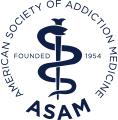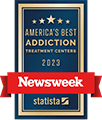Understanding Prescription Painkiller Addiction
Learn About Prescription Painkiller Abuse & Addiction
Prescription painkillers have improved the overall quality of life of those who are struggling with acute or chronic pain. However, these medications can be dangerous. Regardless of if they are consumed under the care of certified healthcare professionals, abused in self-medication attempts, or abused for recreational purposes, prescription painkillers can lead to the development of addiction. Many of the most commonly prescribed painkillers, such as OxyContin, Demerol, Percocet, and Vicodin all contain opioids, which is a highly addictive category of substances that also includes heroin and morphine.
This does not mean that consuming a painkiller that has been prescribed by a professional is the same as consuming heroin. These medications can be highly beneficial, and the risks are significantly decreased when they are consumed as directed. However, the danger of developing an opioid use disorder is very real, and the risk is increased significantly when these substances are consumed without the correct medical supervision.
Oxycodone, which is found in Percocet and OxyContin, Demerol (the brand name for meperidine) and Vicodin (the brand name for hydrocodone) are all synthetic or semi-synthetic opioids, which means they are manufactured in a lab but share similar structures with naturally occurring extracts that are derived from the opium poppy. They also have similar properties, such as alleviating pain, eliciting a sense of mild euphoria, and posing the risk that individuals will develop opioid use disorder. As time goes by, those who take prescription painkillers that contain opioids might become tolerant. Tolerance signifies dependence, as does the presence of upsetting withdrawal symptoms when an individual attempts to stop using the drug or attempts to cease the amount that he or she has been consuming.
The desire to experience pleasing effects of an opioid-based painkiller while avoiding the pain of withdrawal can keep an individual stuck within what might feel like a never-ending opioid use disorder. It can be very difficult for someone to end his or her dependence upon opioids without effective treatment. When comprehensive care is received, an individual can rid his or her body of opioids in a safe and comfortable manner, and can then finish the therapeutic programming that will allow him or her to prevent relapse and live a happy, healthy, sober life.
Statistics
Statistics of Prescription Painkiller Abuse
According to the National Institute on Drug Abuse (NIDA), more than 52 million Americans have used prescription drugs for non-medical purposes at least once within their lifetimes, and six million have done so within the past month. According to the U.S. Centers for Disease Control and Prevention (CDC), opioid-based prescription medications make up nearly 44 overdose deaths each day in the country, a daily average that includes roughly 18 women and 26 men. In 2013, more than 16,000 people lost their lives from prescription opioid overdose. Prior to that, in 2011, prescription painkillers led to 420,000 visits to emergency rooms.
Causes & Risk Factors
Causes & Risk Factors of Prescription Painkiller Abuse
The abuse of prescription painkillers and the development of opioid use disorder might be affected by a series of factors, including the following:
Genetic: Extensive research shows the presence of a genetic impact on the development of chemical dependency. For instance, a genetic disposition to impulsivity and novelty seeking might place an individual at greater risk for abusing these medications and other substances. Also, studies that included both adopted children and twins show that possessing a biological parent with a substance use disorder improves upon the likelihood that an individual will share in similar issues.
Environmental: Someone who experienced child abuse or other forms of childhood adversity will be at increased risk for participating in substance abuse, as will someone who struggles from high levels of stress that overpower his or her coping abilities. Specific to prescription drug abuse, suffering from an accident or injury that requires treatment including prescription painkillers can serve as an environmental risk factor for the development of opioid use disorder.
Risk Factors:
- Family history of substance use disorders
- Trauma
- Ease of access to prescription pain medications
- Prior substance abuse
- Stress
- Poor coping skills
- Experiencing severe acute or chronic pain
Signs & Symptoms
Signs & Symptoms of Prescription Painkiller Abuse
The following include some of the most common signs and symptoms that might indicate that an individual has been abusing opioid-based painkillers.
Behavioral symptoms:
- Visiting multiple doctors to get prescriptions for painkillers
- Borrowing or stealing medication that has been prescribed to someone else
- Social withdrawal and isolation
- Diminished participation in significant activities
- Deception regarding whereabouts and/or activities
- Slurring speech
Physical symptoms:
- Decreased blood pressure
- Constipation
- Impaired coordination
- Heavy perspiration
- Itchiness
- Pupil dilation
- Disrupted sleep patterns
Cognitive symptoms:
- Confusion
- Disorientation
- Poor decision-making skills
Psychosocial symptoms:
- Depression
- Irritability
- Drastic changes in mood
Co-Occurring Disorders
Prescription Painkiller Abuse & Co-Occurring Disorders
Opioid use disorder that includes prescription painkillers can possess a significant impact on one’s psychological, physical, and social wellbeing, and can lead to a number of negative effects, such as:
- Suicidal ideation
- Suicide attempt or attempts
- Financial distress
- Impaired or destroyed interpersonal relationships
- Homelessness
- Isolation
- Development of physical health problems
- Job loss and chronic unemployment
- Family discord, including separation and divorce
- Legal problems, including arrest and incarceration
Someone who has grown dependent on prescription painkillers might also be grappling with co-occurring mental health conditions. The following disorders are more commonly diagnosed in those who have also developed an opioid use disorder:
- Other substance use disorders
- Posttraumatic stress disorder (PTSD)
- Major depressive disorder
- Persistent depressive disorder
Effects of Withdrawal & Overdose
Effects of Withdrawal & Overdose From Prescription Painkiller Abuse
Effects of prescription painkiller withdrawal: Ceasing or drastically decreasing the use of prescription painkillers after a dependency has developed can cause a number of upsetting symptoms, including:
- Watery eyes and runny nose
- Heavy perspiration
- Tremors and twitches
- Powerful cravings for opioids
- Irritability and agitation
- Dysphoria
- Nausea, vomiting, and diarrhea
- Inability to sleep
- Pain in bones and muscles
- Fever
- Loss of appetite
Effects of prescription painkiller overdose: Opioids affect parts of the brain that also impact involuntary processes such as heart rate and respiration. Therefore, overdosing can place an individual in extreme danger. Someone who displays the following signs and symptoms after consuming a prescription painkiller might need immediate medical attention:
- Extreme disorientation
- Seizure
- Loss of consciousness
- Breathing problems
- Pinpoint pupils
- Slow or otherwise irregular pulse







